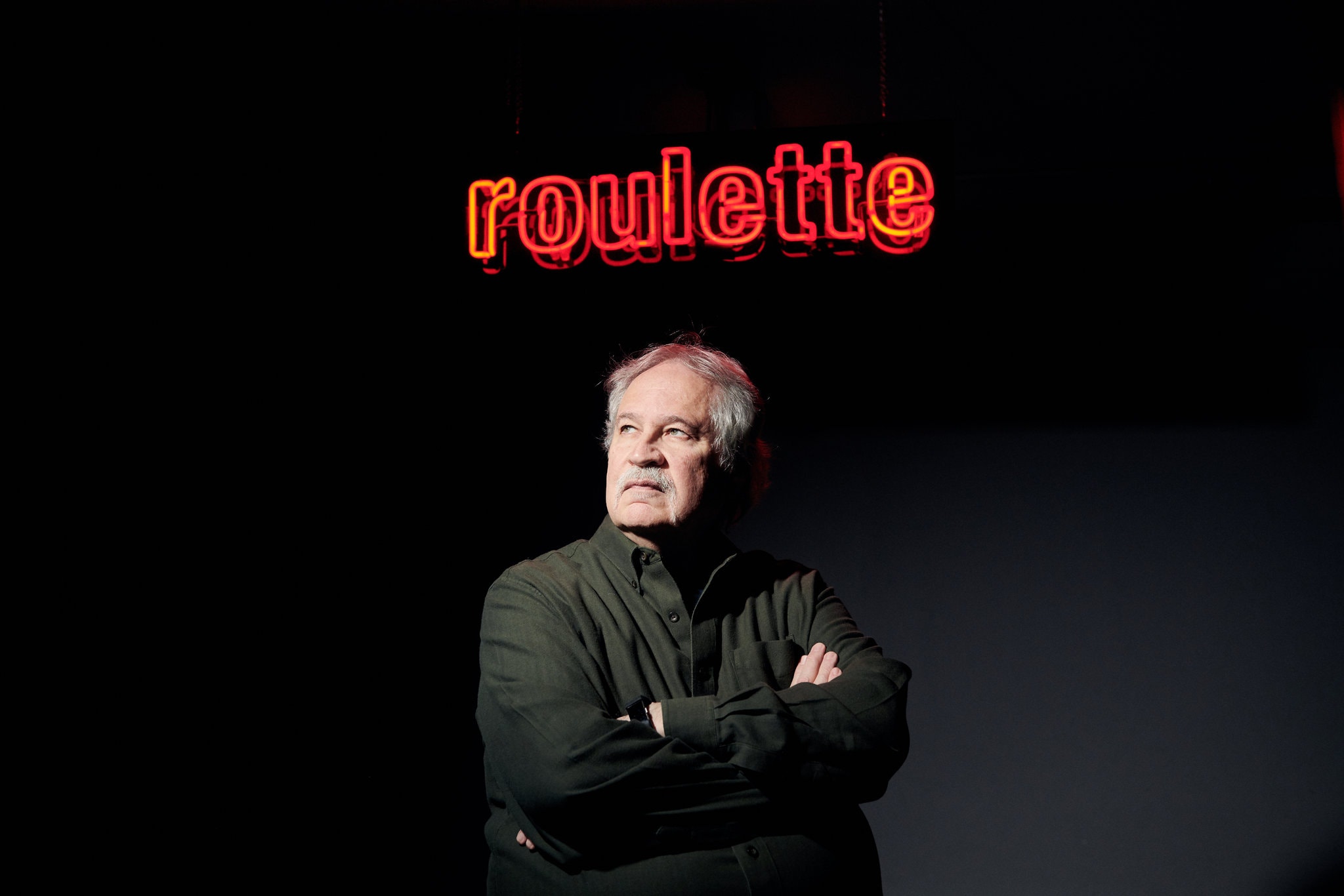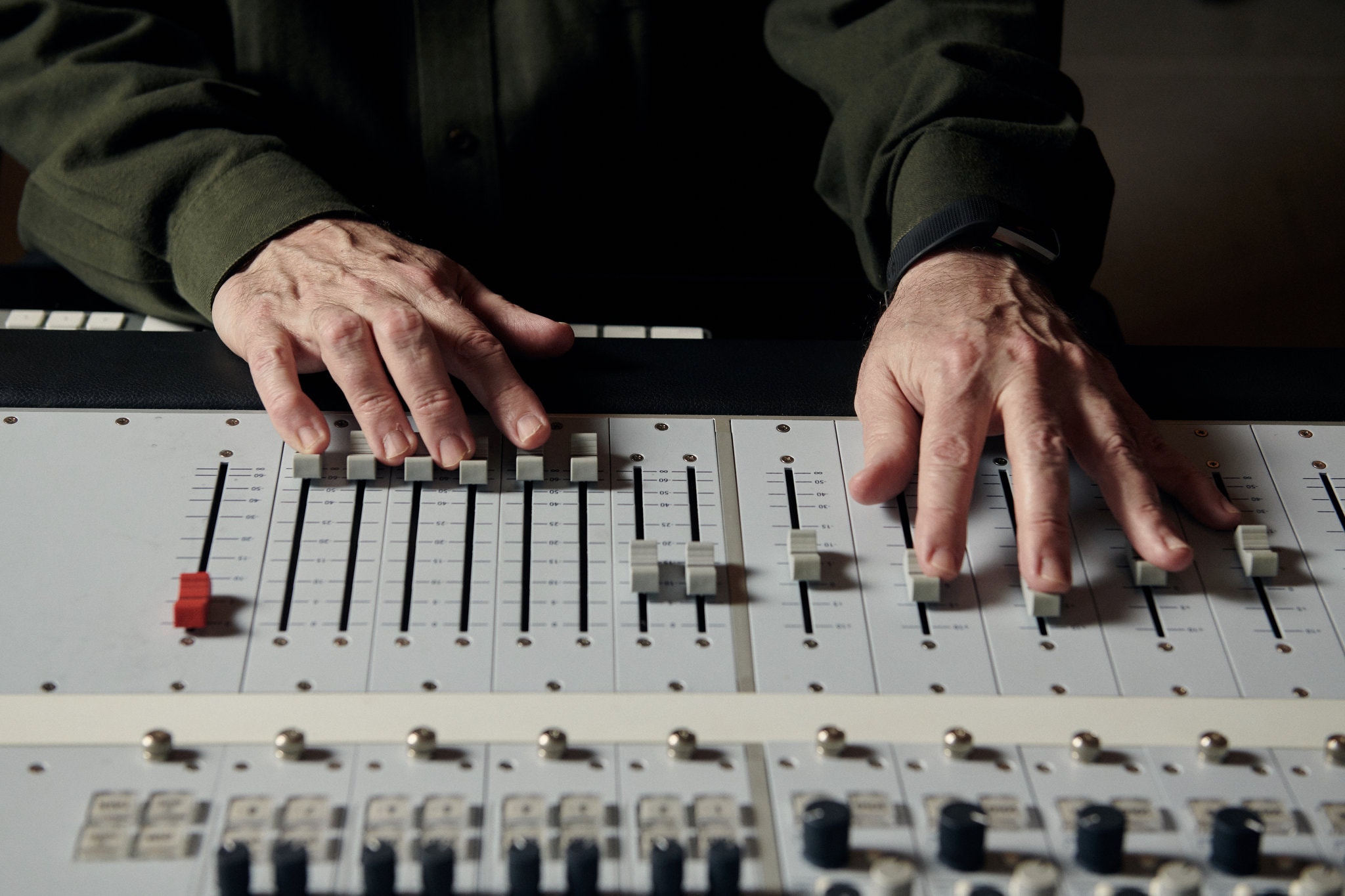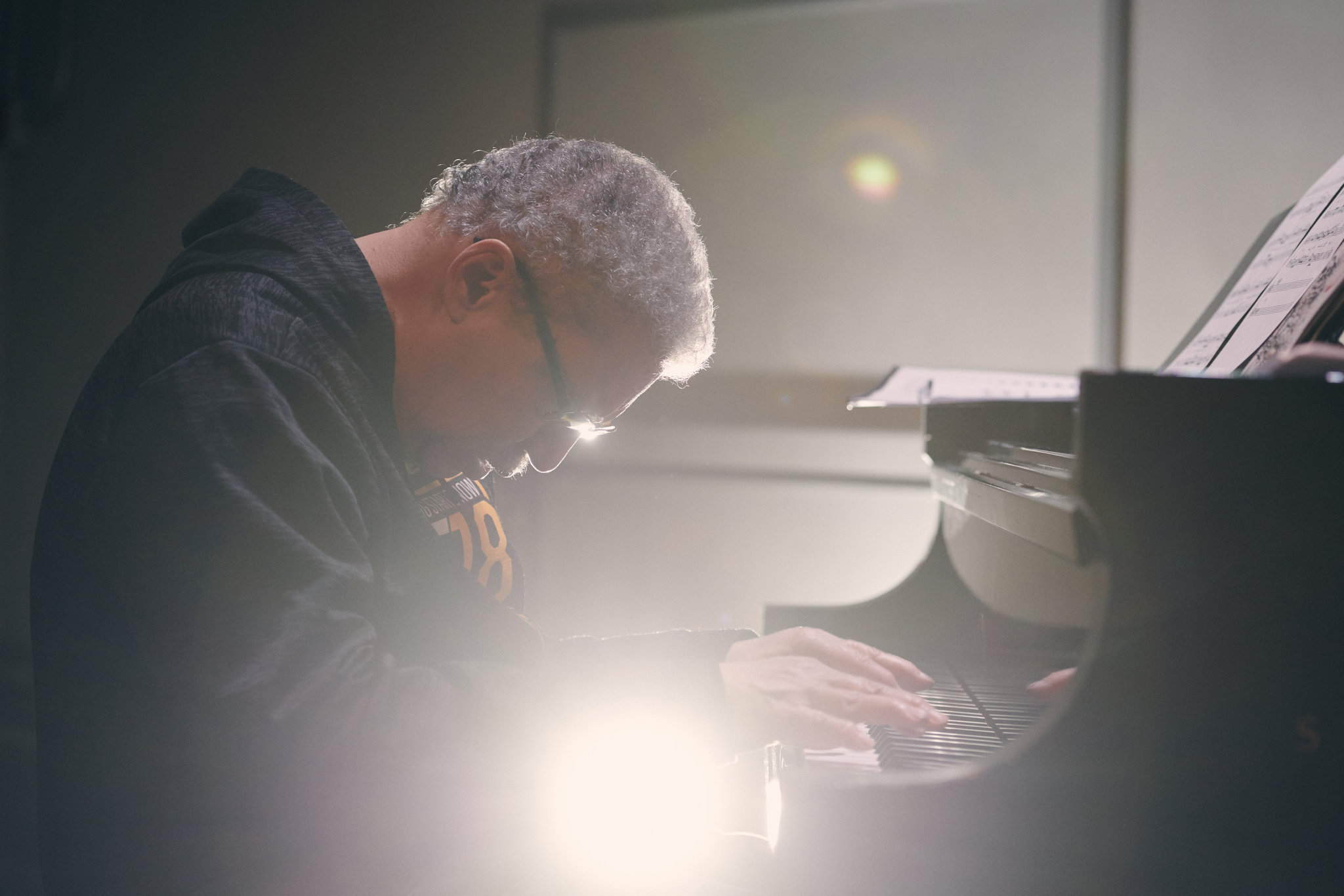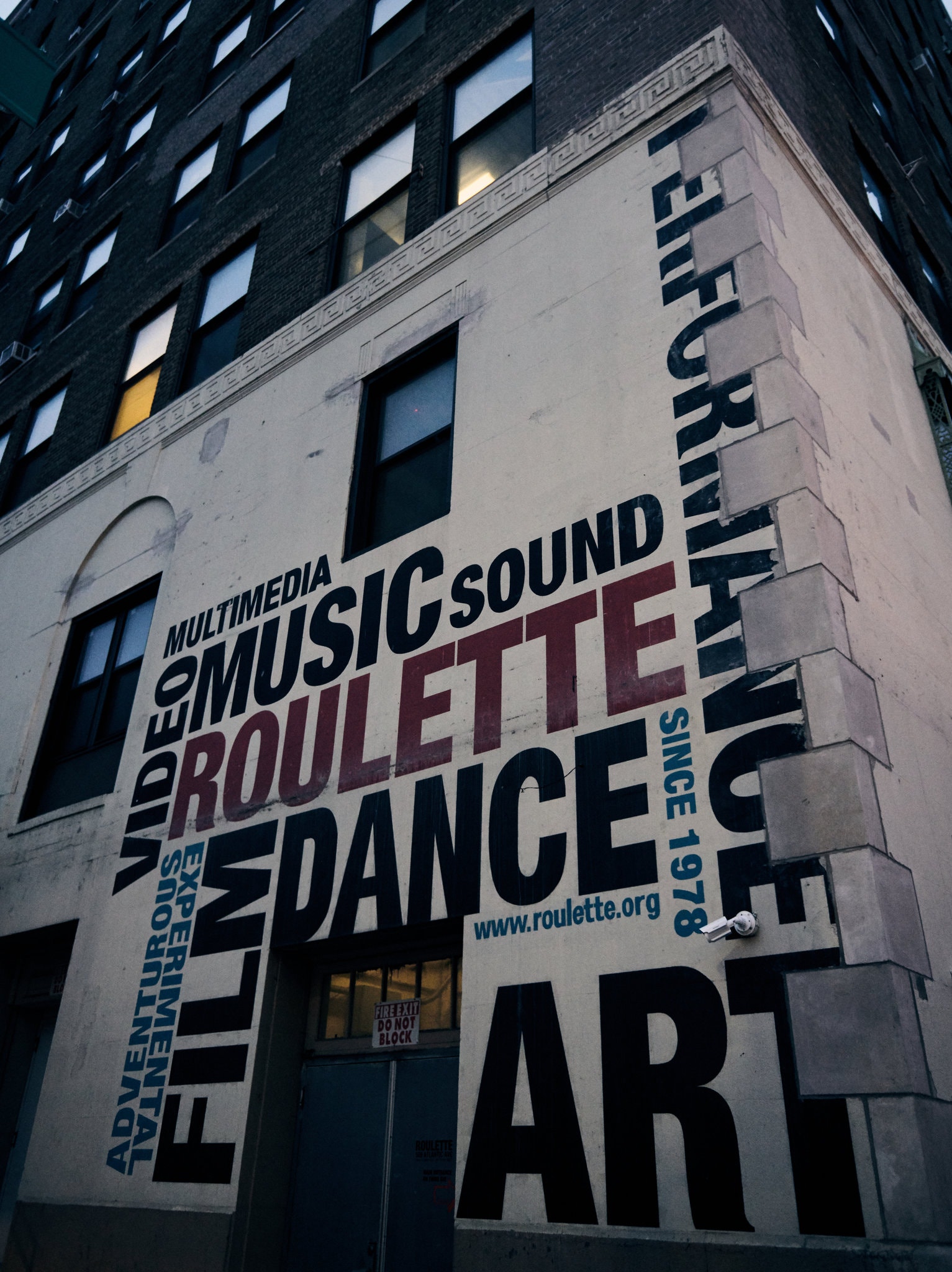The Roulette Archive recently received a $20K grant from the GRAMMY Museum® to professionally preserve and digitize concert recordings made here between 1985 and 2004.
LOS ANGELES (JULY 10, 2019)—The GRAMMY Museum® Grant Program announced today that $200,000 in grants will be awarded to 15 recipients in the United States to help facilitate a range of research on a variety of subjects, as well as support a number of archiving and preservation programs. Research projects include work on musical anhedonia, musical training’s relationship to complex memories, and the relationship between cognitive function and singing accuracy. Preservation projects include the archiving of uncirculated John Hartford jam tapes, 960 audio reels of Cajun and zydeco artists, and 221 rare interview recordings with African-American actors, performers, composers, musicians, and scholars, among many other preservation projects.
“The GRAMMY Museum Grant Program to date has awarded more than $7.5 million to more than 400 grantees,” said Michael Sticka, Executive Director of the GRAMMY Museum. “The work we help fund includes an impressive array of projects that are at the forefront of exploring music’s beneficial intersection with science, and that maintain our musical legacy for future generations. The initiatives announced today exemplify the Museum’s mission to uphold music’s value in our lives and shared culture.”
Generously funded by the Recording Academy, the GRAMMY Museum Grant Program provides funding annually to organizations and individuals to support efforts that advance the archiving and preservation of the recorded sound heritage of the Americas for future generations, in addition to research projects related to the impact of music on the human condition. In 2008, the Grant Program expanded its categories to include assistance grants for individuals and small to mid-sized organizations to aid collections held by individuals and organizations that may not have access to the expertise needed to create a preservation plan. The assistance planning process, which may include inventorying and stabilizing a collection, articulates the steps to be taken to ultimately archive recorded sound materials for future generations.
Scientific Research Grantees
Royal Institution for the Advancement of Learning—McGill University—Montreal
Awarded: $20,000
Caroline Palmer, Signy Sheldon, and Rebecca Scheurich of McGill University will test people’s memories for rich auditory detail in real-world events. Brain activity of musically trained and untrained individuals will be measured as they recall complex events. Findings will address the link between musical training, imagery, and autobiographical memory.
Northeastern University—Boston
Awarded: $20,000
Music is a rewarding social activity across human cultures, but recent studies have identified a special population of people with musical anhedonia, who feel no reward in response to music. This project will identify the incidence and neural substrates of musical anhedonia, and test the relationship between musical reward sensitivity and difficulties with social bonding, which is characteristic in people with autism spectrum disorders.
University at Buffalo—Buffalo, New York
Awarded: $20,000
Recent studies have found correlations between singing accuracy and measures of general cognitive functioning: individuals’ ability to form auditory images and auditory short‐term memory capacity. This project consists of two training studies designed to test whether there is an actual causal relationship: Can improved imagery and/or memory lead to more accurate singing, and can improved singing accuracy enhance imagery and/or memory capacity?
Preservation Assistance Grantees
The Kitchen Sisters Productions—San Francisco
Awarded: $5,000
The goal of this project is to create a plan to inventory, archive, preserve, and make publicly available the Kitchen Sisters Collection, which includes some 7,000 hours of recordings of nearly 40 years of interviews, oral histories, music and sound for the NPR series, podcasts, projects, and stories. Funds will be used to hire a professional to develop a catalog, plan for digitization, long-term storage, back-up, and accessibility.
Percussive Arts Society—Indianapolis
Awarded: $5,000
The Percussive Arts Society (PAS) plans to inventory and assess approximately 150 hours of music on 78s from the Edwin Gerhardt Marimba Xylophone Collection in preparation for its subsequent preservation, digitization and dissemination. Support will allow PAS to engage an expert to help inventory this extensive collection of recordings and prioritize items for preservation.
The House Foundation for the Arts, Inc—New York
Awarded: $5,000
As a steward of Meredith Monk’s legacy, the House will embark on the Lineage Project to preserve, enhance, and maintain the integrity of Monk’s artistic works and make such works available for the benefit of the public. The House will publish an online database cataloging 50-plus years of previously unavailable photographs, video, audio, and objects. This resource will act as a centralized location for her archive and support ongoing digitization and preservation efforts, providing students, artists, curators, and the general public access to this rich history.
Armenian Studies Program, California State University, Fresno—Fresno, California
Awarded: $5,000
This project will focus on the inventory and cataloging of nearly 1,500 recordings on 78-rpm discs from the Armenian-American diaspora. The locally produced records document the early history of Armenians in the United States. The collection represents the voices of musicians whose social, economic, and political status forced them out of their homeland. It was thus only in the emerging cosmopolitan American music scene that most of these artists were first able to be heard.
Bluegrass Country Foundation—Washington, D.C.
Awarded: $5,000
The Bluegrass Country Foundation will identify, index and preserve recordings of bluegrass music shows broadcast over the last 50 years at WAMU-FM in Washington, D.C. These include programs featuring rare and out-of-print recordings as well as interviews, concerts, and live studio performances.
Preservation Implementation
San Francisco Symphony—San Francisco
Awarded: $12,000
The San Francisco Symphony will transfer to a digital format 118 live recordings conducted by music director Michael Tilson Thomas, who will be stepping down from his post in 2020. This comprehensive digital collection will preserve the historic contributions Thomas made to the modern orchestral repertoire during his exceptional 25-year tenure with the San Francisco Symphony.
Center for Popular Music at Middle Tennessee State University—Murfreesboro, Tennessee
Awarded: $19,963
This project will digitize and catalog 573 cassettes of jam performances from the John Hartford audio collection. A hit songwriter and “newgrass” pioneer, Hartford obsessively documented his activities at the epicenter of Nashville’s music scene. These unique and uncirculated recordings capture some of the most important bluegrass, country, and folk musicians of the late-20th century in rare and informal settings.
Smithsonian Folkways Recordings—Washington, D.C,
Awarded: $20,000
This project will digitize roughly 960 audio reels and corresponding materials—related to recordings of Cajun and zydeco artists—for preservation, rights research, and online access.
Boston Symphony Orchestra, Inc.—Boston
Awarded: $11,518.50
The Boston Symphony Orchestra intends to transfer and preserve endangered audio from 282 DATs that correspond to 273 Boston Pops concerts held at Symphony Hall from 1992–2002. Project deliverables include preservation master files, access copies on CD for public use in the Archives Reading Room, MP3 files of the full concerts for internal and individually approved remote reference, and an Encoded Archival Description finding aid.
The City College of New York Libraries—New York
Awarded: $20,000
The City College of New York Libraries (CCNY Libraries) will digitize and preserve more than 221 rare interview recordings—conducted mainly between 1970 and 1974—with African-American actors, performers, composers, musicians and scholars. Digital copies will be preserved in CCNY’s trusted digital repository and access copies will be made available onsite at the CCNY Archives & Special Collections as well as remotely accessible at CCNY and four partner institutions.
Roulette Intermedium, Inc.—Brooklyn, New York
Awarded: $20,000
The Roulette Archive is an initiative to preserve, restore, digitize, and distribute 1,100 audio recordings on threatened PCM-F1 and DAT tapes recorded between 1986-2002. These quality recordings are part of a 4,000-plus historic collection capturing significant achievements in contemporary music dating back to 1980 and continuing to this day. The concerts took place in Roulette’s loft venue in New York City during a fertile period of experimentation and discovery.
Tulane University—New Orleans
Awarded: $11,518.50
The Hogan Jazz Archive, part of Tulane University Special Collections, will digitize and preserve 25 unique recordings from Vernon Winslow, the first black disc jockey in New Orleans. The recordings offer a rare chance to hear 1940s and 1950s radio continuity, including local advertisements and conversations with local and itinerant musicians, and provide insight into the dawn of segregated radio in the city. Once digitized, they will be accessible to the public online.
about the grammy museum
Established in 2008, the GRAMMY Museum is a nonprofit organization dedicated to cultivating a greater understanding of the history and significance of music. Paying tribute to our collective musical heritage, the Museum explores and celebrates all aspects of the art form—from the technology of the recording process to the legends who’ve made lasting marks on our cultural identity. In 2017, the Museum integrated with its sister organization, the GRAMMY Foundation®, to broaden the reach of its music education and preservation initiatives. As a unified organization, today, the GRAMMY Museum fulfills its mission of making music a valued and indelible part of our society through exhibits, education, grants, and public programming.




